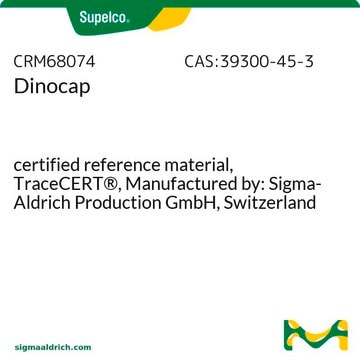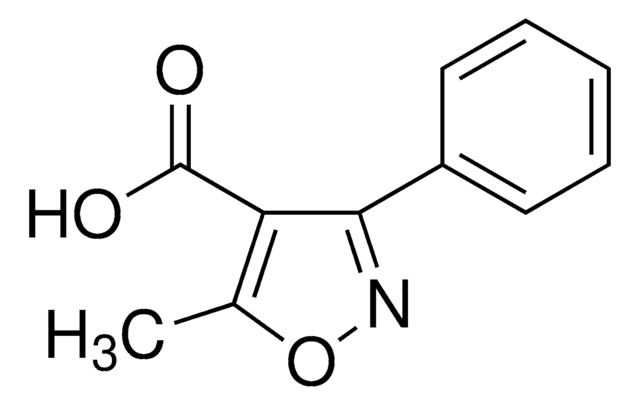E45260
Woodward′s reagent K
95%
Synonym(s):
2-Ethyl-5-phenylisoxazolium-3′-sulfonate, NEPIS
Sign Into View Organizational & Contract Pricing
All Photos(1)
About This Item
Empirical Formula (Hill Notation):
C11H11NO4S
CAS Number:
Molecular Weight:
253.27
Beilstein:
4149224
EC Number:
MDL number:
UNSPSC Code:
12352005
PubChem Substance ID:
NACRES:
NA.22
Recommended Products
Assay
95%
reaction suitability
reaction type: Coupling Reactions
mp
220 °C (dec.) (lit.)
application(s)
peptide synthesis
SMILES string
CC[n+]1ccc(o1)-c2cccc(c2)S([O-])(=O)=O
InChI
1S/C11H11NO4S/c1-2-12-7-6-11(16-12)9-4-3-5-10(8-9)17(13,14)15/h3-8H,2H2,1H3
InChI key
MWOOKDULMBMMPN-UHFFFAOYSA-N
Storage Class Code
11 - Combustible Solids
WGK
WGK 3
Flash Point(F)
Not applicable
Flash Point(C)
Not applicable
Choose from one of the most recent versions:
Already Own This Product?
Find documentation for the products that you have recently purchased in the Document Library.
Jongchan Woo et al.
Protein science : a publication of the Protein Society, 17(4), 725-735 (2008-03-25)
Renilla luciferase (RLUC) is a versatile tool for gene expression assays and in vivo biosensor applications, but its catalytic mechanism remains to be elucidated. RLUC is evolutionarily related to the alpha/beta hydrolase family. Its closest known homologs are bacterial dehalogenases
P Bustos et al.
Journal of protein chemistry, 15(5), 467-472 (1996-07-01)
The reaction of Woordward's reagent K (WRK) with model amino acids and proteins has been analyzed. Our results indicate that WRK forms 340-nm-absorbing adducts with sulfhydryl- and imidazol-containing compounds, but not with carboxylic acid derivatives, in agreement with Liamas et
E Winkler et al.
Biochemistry, 36(1), 148-155 (1997-01-07)
The transport inhibiting nucleotide binding to the uncoupling protein (UCP) has a unique pH dependence and has been postulated to be controlled by the dissociation state of a carboxyl group in UCP with pK 4.5 and, in addition only for
Hassan Faridnouri et al.
Bioelectrochemistry (Amsterdam, Netherlands), 82(1), 1-9 (2011-07-01)
This work describes the reaction mechanism for chemical modification of tyrosinase by Woodward's Reagent K and its covalent attachment to a glassy carbon electrode. The spectrophotometric studies revealed that the modification does not cause a significant structural change to tyrosinase.
Nelson Carvajal et al.
The protein journal, 23(3), 179-183 (2004-06-18)
Human liver arginase (EC 3.5.3.1) was totally inactivated by incubation with Woodward's reagent K (WRK). The inactivation followed pseudo-first-order kinetics, and the order of the inactivation was close to 1, consistent with reaction of one molecule of WRK with one
Our team of scientists has experience in all areas of research including Life Science, Material Science, Chemical Synthesis, Chromatography, Analytical and many others.
Contact Technical Service








